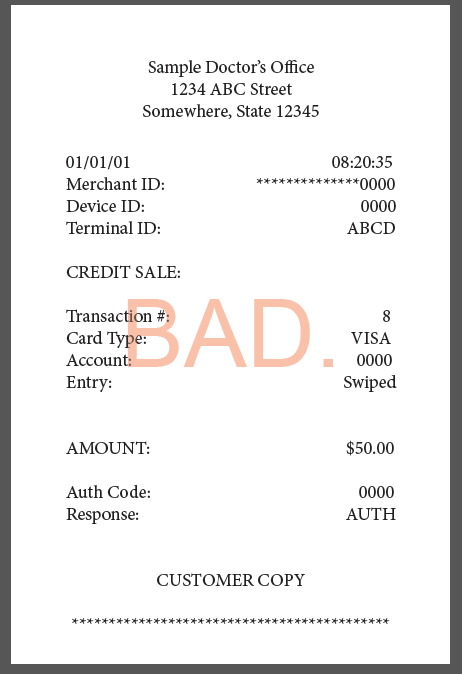What type of documentation should I include with my eligible medical expense reimbursements?
You can substantiate your claim with one of the following:
- The Explanation of Benefits (EOB) statement returned to you from the insurance carrier indicating the amount you are responsible for
- Copay receipts if you are covered under a managed care or prescription drug plan
- If there is no insurance for the health care expenses, submit an itemized bill with the following:
- Name of the provider and patient
- Service cost, date, and description
- Notation when there is no coverage
What type of documentation should I include with my eligible prescription reimbursements?
To substantiate your prescription claim, we must receive documentation that includes all five pieces below:
- Patient name
- Provider or pharmacy name
- Date of prescription
- Prescription name
- Cost of prescription
The most common (and accessible) documentation that includes all five identifying details is a prescription summary print-out from your pharmacy. You may also locate this information on the prescription label, which is often stapled to your bag (in addition to being affixed to the prescription itself).
What type of documentation should I include with my premium reimbursement?*
You can substantiate your claim with a Premium Notice, such as a bill or acceptance letter from the insurance company, which includes the following:
- The premium amount
- The effective date of coverage
- Name of the person insured – this will be you, your spouse or a qualifying dependent
- Name of provider
A note about Long-Term Care Premiums: If you are requesting reimbursement of a long-term care premium, you must also provide proof of payment (in addition to the items listed above.) Long-term care premiums cannot be set up for recurring reimbursements due to IRS annual limitations based on the year in which the payment was made. For this reason, proof of payment is required for all long-term care claims.
Good Documentation vs. Bad**
 Good documentation includes:
Good documentation includes:
- A breakdown of each service and/or medical expense
- The date each service and/or medical expense was incurred
- Your name (or your spouse / eligible dependent’s name, if the expense is for them)
- We suggest an EOB, Itemized Statement, or Copay Receipts because these forms of documentation will always include the information we need to quickly process your reimbursement.
- See left for an example of an Itemized Receipt.
 Bad documentation examples:
Bad documentation examples:
- A late notice that only includes the total amount owed and does not include a description of the services incurred
- A credit card receipt that only includes the total amount paid
- See left for an example of bad documentation.
If you have questions on reimbursement documentation, please email us at [email protected].
*Flexible Spending Accounts do not reimburse premiums. This applies to Health Reimbursement Arrangements.
**Proof of payment must also be received for long-term care premiums.
